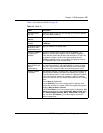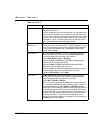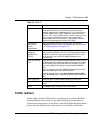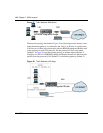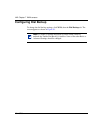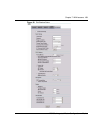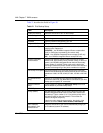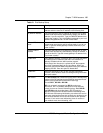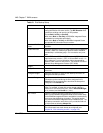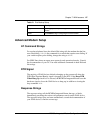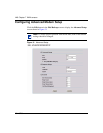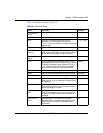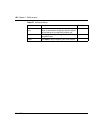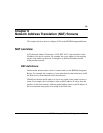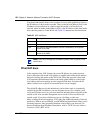
Chapter 7 WAN screens 115
BCM50a Integrated Router Configuration — Basics
Used Fixed IP Address Select this check box if your ISP assigned you a fixed IP
address and then enter the IP address in the following field.
My WAN IP Address Leave the field set to 0.0.0.0 (default) to have the ISP or other
remote router dynamically (automatically) assign your WAN IP
address, if you do not know it. Type your WAN IP address here,
if you know it (static). This is the address assigned to your local
BCM50a Integrated Router, not the remote router.
Remote IP Subnet
Mask
Leave this field set to 0.0.0.0 (default) to have the ISP or other
remote router dynamically send its subnet mask, if you do not
know it. Type the remote gateway's subnet mask here, if you
know it (static).
Remote Node IP
Address
Leave this field set to 0.0.0.0 (default) to have the ISP or other
remote router dynamically (automatically) send its IP address, if
you do not know it. Type the remote gateway's IP address here,
if you know it (static).
Enable SUA Using Network Address Translation (NAT), the router translates
an Internet protocol address used within one network to a
different IP address known within another network.
SUA (Single User Account) is a subset of NAT that supports
two types of mapping: Many-to-One and Server. When you
select this option the BCM50a Integrated Router uses Address
Mapping Set 255. Clear this option to disable NAT.
Enable RIP Select this check box to turn on RIP (Routing Information
Protocol), which allows a router to exchange routing information
with other routers.
RIP Version The RIP Version field controls the format and the broadcasting
method of the RIP packets that the BCM50a Integrated Router
sends (it recognizes both formats when receiving).
Choose RIP-1, RIP-2B or RIP-2M.
RIP-1 is universally supported; but RIP-2 carries more
information. RIP-1 is probably adequate for most networks,
unless you have an unusual network topology. Both RIP-2B
and RIP-2M sends the routing data in RIP-2 format; the
difference being that RIP-2B uses subnet broadcasting while
RIP-2M uses multicasting. Multicasting can reduce the load on
nonrouter machines because they generally do not listen to the
RIP multicast address and so do not receive the RIP packets.
However, if one router uses multicasting, then all routers on
your network must use multicasting, also.
Table 21 Dial Backup Setup
Label Description



